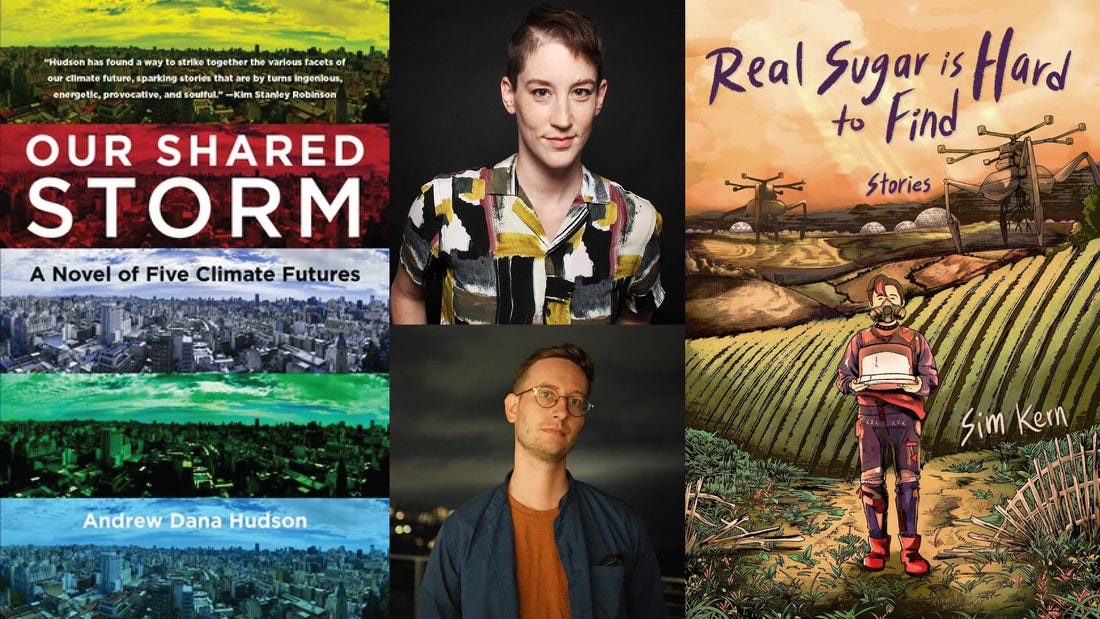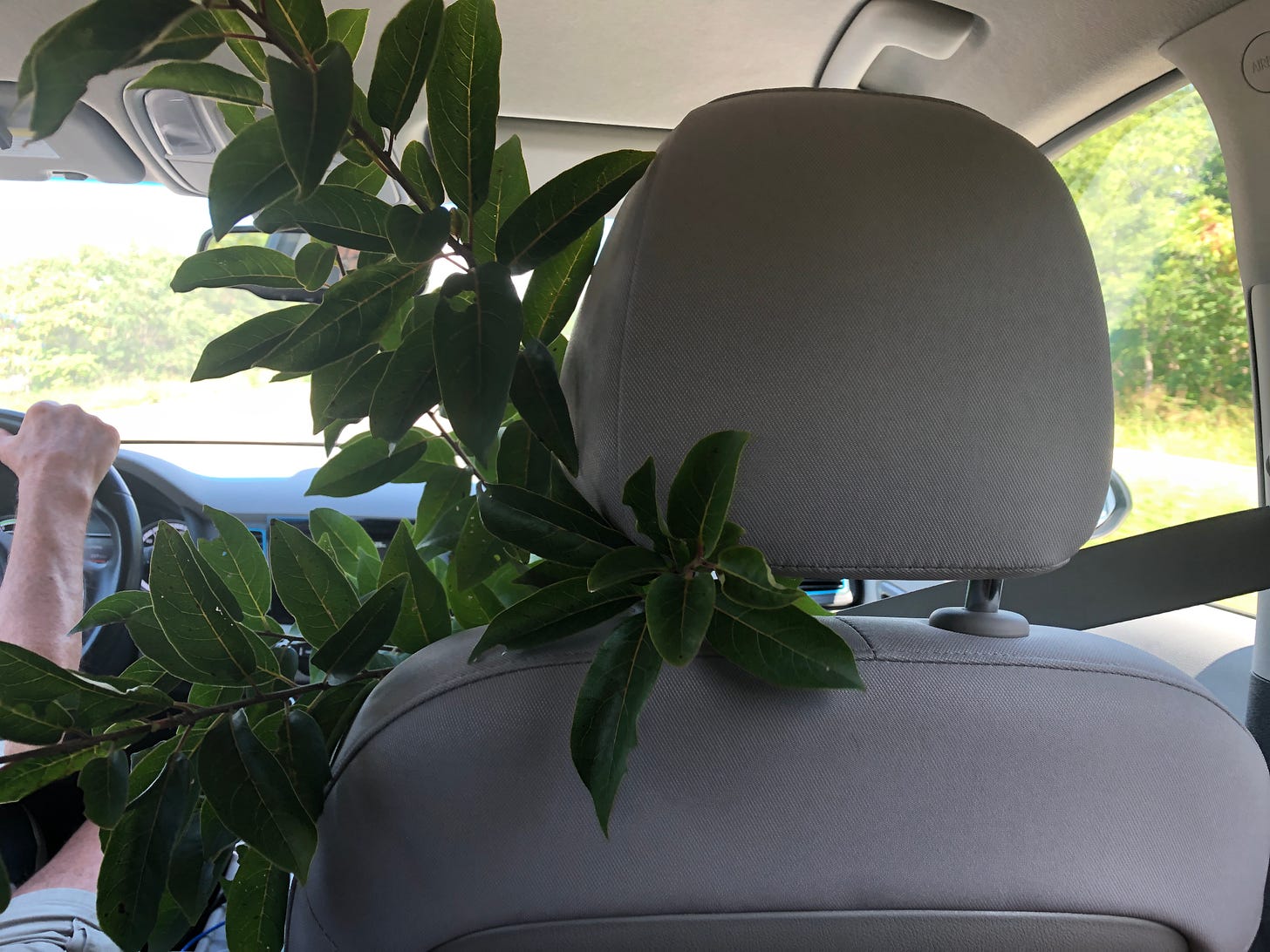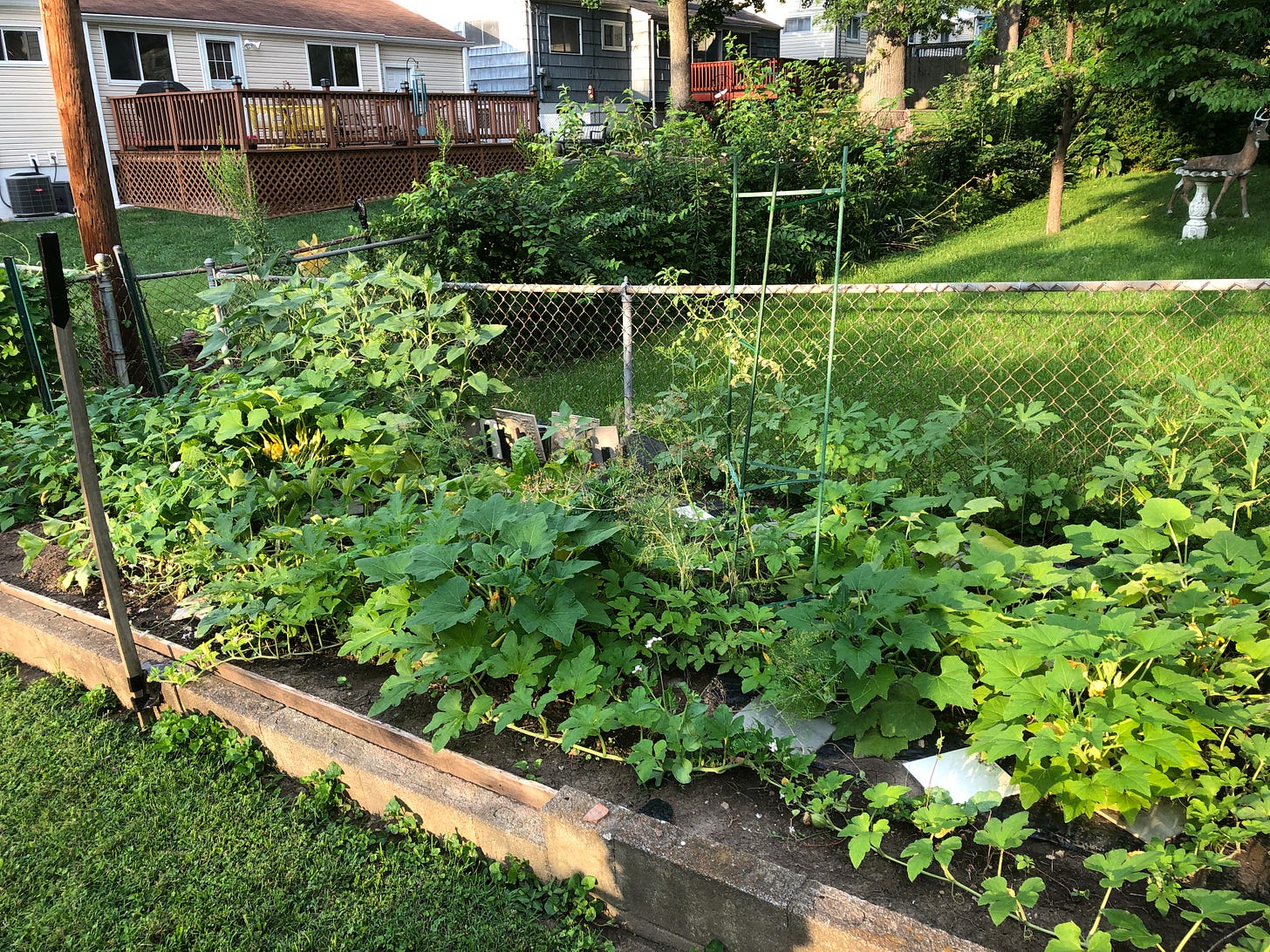The Peril and Promise of “Good Enough” Climate Action
Recently I made my Jacobin debut with an essay on carbon dioxide removal (CDR) and how the left should approach the issue. I find direct air capture and the Cambrian explosion of emerging drawdown and sequestration techniques and technologies super fascinating and exciting. But there’s also a lot of valid skepticism about carbon capture, since it’s been peddled as a non-solution by fossil fuel companies who want to simply put point-capture rigs on coal/gas plants and keep burning.
I argue, though, that we should look at the many terrible climate disasters afflicting the working class and the planet, and see that stopping global warming is not enough. The warming we're already experiencing, about 1.1ºC, turns out to have terrible consequences, and the 1.5ºC-2ºC where we hope to stabilize is going to be orders of magnitude worse. If we want future generations to enjoy a habitable, stable world, we have no choice but to go beyond decarbonization and engage in what I call “climate repair.”
You should go read the article, but I wanted to go into something that I didn’t manage to squeeze into the article but did talk a bit about on Twitter: what climate activists should learn from the evolution we’ve seen in COVID policy.
I wrote the first draft of my Jacobin piece back in early January. Since then there’s been a steady rolling back of COVID emergency measures, masking/distancing rules/habits, and economic support——even as we’ve seen huge variant-driven waves that have caught a lot of the people who had previously been pretty careful (like me). And yeah, people are tired of the pandemic. Most everyone has some immune protection, either from vaccine doses or prior infections (though both are dwindling in effectiveness as time goes on and the virus mutates). Health and survival have become a matter of personal choice and responsibility. Maybe we’ll get an updated booster soon, but otherwise most governments and a lot of people have decided that what we’ve done is Good Enough. We’re just going to live with a persistent level of COVID infection, death and disability. We’ve added the equivalent of diabetes to the menagerie of human suffering, but doing much about it is too hard. So we’re done.
There’s a real danger that the same thing will happen with climate action. We’ll do a lot of decarbonization, especially the low-hanging fruit. And when targets are met (or deadlines passed with goalposts moved), the tight-fisted states and banks and capitalists will want to quietly declare the climate crisis over. The rich, who by then will have gotten the best “personal climate adaptation” money can buy, will prefer tax cuts to another round of investment in climate repair infrastructure. So it will be “mission accomplished” despite the fact that the world is left fundamentally more hostile.
Environmentalists, the left, anyone committed to a future planet that is habitable for all, should anticipate this flagging of inertia and make sure our demands match the scope of the problem. We need to move on CDR not just because we’ll need time to ramp up the technology to gigaton scale, establish disposal reservoirs, and refine the protocols for monitoring multi-century carbon storage; but also because we need to build multi-decade CDR commitments into our climate treaties, targets, and legislation.
It’s an interesting moment to talk about climate ambition. The freshly passed Inflation Reduction Act is a testament to how fighting for truly ambitious and just climate action apparently works under capitalism. We demand a Green New Deal jobs program that tackles not just decarbonization and adaptation but the social problems that create the conditions of vulnerability that turn weather into disaster. What we get is a muddled tax credit package for renewables and electrification, stacked with a ton of potential boons to fossil interests.
It’s a huge disappointment, a slap in the face to Sunrise and everyone else who pushed and pushed for climate action. And yet, it’s also kinda great? As America’s first real climate spending package, it’s going to make everything easier, including (hopefully) future, more ambitious climate legislation. It’s likely to do a lot to smooth and speed up the energy transition, both at utility and consumer scales. And the fact that the IRA is an unholy Frankenstein’s monster of a giveaway to a broad swath of corporate interests means that it might be more resilient to long term political attacks.
The IRA isn’t enough, not by a long shot. But for the moment, under the yoke of this capitalist hegemony, it might be Good Enough.
So for me the lesson is, we should demand 100% of what we want, including drawing atmospheric and oceanic carbon back down to near pre-industrial levels. Including taxing the rich to fund for it, and nationalizing fossil fuel companies, and trying oil execs for their crimes against humanity, and paying climate victims for the loss and damage they’ve suffered due to predatory climate negligence. As fictional future activists in my book chant, “Give Us Repair and Reparations!” We might not get all of it, but we won’t get anything if we set our sights too low.
One more time, here’s my Jacobin piece. If you want to let me know what you think, there’s a comment button right here:
Upcoming Event: Facing the Storm w/ Sim Kern
Thursday, September 8, 6:30pm EDT, I’ll be doing an online event on climate fiction with fellow solarpunk Sim Kern, whose new short story collection Real Sugar Is Hard to Find I had the pleasure to read. It’s a solid spread of stories, with rich themes of ecology and family. Some explore grimly plausible climate/reproductive rights futures. A few are whimsically affecting. The last few are really interesting evocations of better (not perfect) futures. I’ll probably have more to say next newsletter after that chat. I hope you can tune in——it should be a great conversation!
The event is hosted by the Working Writers Group and A Novel Idea (a bookstore in Philly), and our discussion will be moderated by Miriam Seidel. Register here.
Art Collection: Teen Origins Edition
I’ve spent the last week visiting my parents in St. Louis, Missouri. STL isn’t exactly my childhood home. We bounced around a bunch, and they didn’t move to that house until I was in undergrad. Still, when I’m there I’m surrounded by a great deal of cultural detritus from my childhood: 3E D&D manuals, forgotten board games (Fireball Island, anyone??), books on psychedelia/mysticism/Bush era politics, and the above painting.
I got this piece when I was a nineteen, on vacation to Puerto Vallarta, Mexico. One evening we got flan and went out on the boardwalk, took in the tourist trap sights, and saw this pair of Central American teenagers speed painting wild spacey vistas. They worked with spray paint, cardboard, and kitchen knives, right there on the pavement.
As a performance, it was really engaging, and at the time I was still a little into Robert Anton Wilson and some of the other 70s weirdos I’d stumbled upon trawling the spirituality section of used book shops. (In high school, before you have a career or a body of creative/hobby work or a chosen partner/social circle, What You Believe can feel like this paramount way of establishing your identity, a way of distinguishing oneself from one’s family and classmates, and an even more pressing question than How The World Works.) Anyway, we watched them paint this, and then bought it. It was probably the first piece of actual art I bought for myself.
Material Reality
I was in STL last week because my parents were celebrating their 50th (!!!) wedding anniversary. For this “golden” anniversary, we got the idea of getting them a semi-golden fruit tree. First thought (upon researching gold-colored plants) was a quince tree, which honestly I’d never heard of before. Apparently they produce bright yellow, pear-looking fruit that, while not great for eating raw, make good jam.
On talking with a horticulturalist, however, I found out that quince are particularly vulnerable to fireblight, a bacterial infection that’s common in areas with warmer, wetter springs. Fireblight doesn’t seem to be a huge issue in my parents’ neighborhood, but their springs are only going to get warmer. And anyway, the nurseries I talked to weren’t shipping until the spring.
So we ended up going with a persimmon tree. They are native to Missouri (among other places), and my mom has core memories of childhood road trips around the midwest on which they’d stop and pick sweet persimmons on the side of the road.
The catch was, while the plant nursery we went to did have Missouri persimmons, they didn’t know which ones were male or female yet. They’ll need one of each to reliably produce fruit——unless we lucked into a female and there happened to be a male persimmon tree somewhere in the neighborhood. So we purchased a single tree, and come the spring we’ll see what sex their tree is when it buds. Then they can go and (hopefully) bring home its mate. Anyway we didn’t have a great plan for getting two persimmons home, so it was probably best we just went with one. It’ll have to be a multi-year project, just like, as my folks joked, a marriage.
My parents have turned into real dedicated gardeners in their retirement, and their front and back yards are both looking beautiful this season. All week we ate squash, green beans, figs, pears and tomatoes my mom had grown. My dad, meanwhile, has been on a mission to inch-by-inch replace their front yard grass with flowers and ornamentals. He even apparently dropped some “mixed seeds” in one spot and grew these mysterious drooping stalks——real Stardew Valley hours.
Anyway, here is a last photo of a small part of their amazing work. One step closer to Retrosuburbia.
A Change of Pace
I’ve been writing this newsletter every other week for closing in on a year now. A big part of that was having a forum to promote and discuss my recent book. I still have events planned, but that flurry of activity definitely seems to be slowing down. I also find I like this newsletter better when it doesn’t sneak up on me, when I take the time to plan a discrete bit of writing, as I did with “Pods, Domes, and Faux Phones” the other week. And I’ve found out about some big life changes coming up that are going to be taking up my time.
All of which is to say, I’m moving this newsletter from fortnightly to monthly. It’ll be the last Sunday of every month, and it should hopefully be a bit longer, headlined by a theory/craft essay like the last issue. Thanks for understanding, and for sticking with me so far. See you back in the clubhouse September 25th.









I'm sad to hear that you're moving Solar Shades to monthly, but "Pods, Domes, and Faux Phones" is one of my favorite essays you've created. If the change allows you to write more along those lines, go for it!
This issue may have snuck up on you, but I really like it. It feels spontaneous. DDH